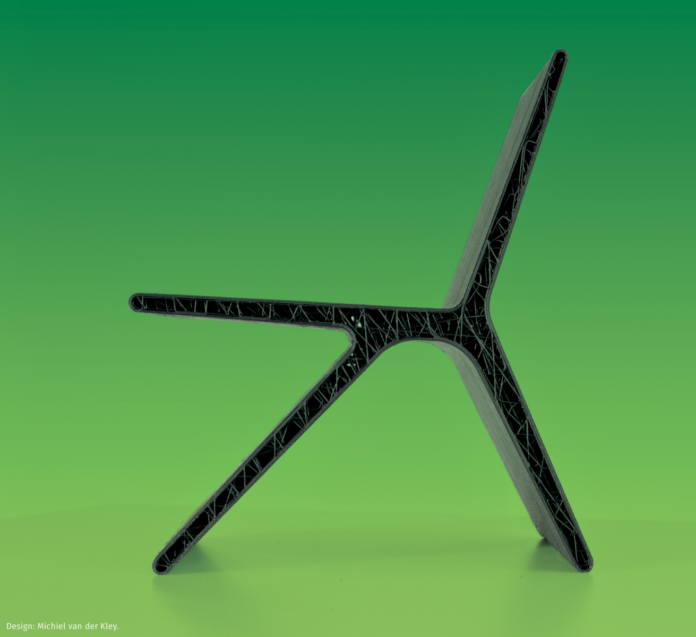Manufacturers can now opt for a more circular supply chain without jeopardizing performance
It’s been exactly one month that Covestro has confirmed the acquisition of DSM, expanding this way its portfolio of resins & functional materials. We were eager to discover what would be the first material that the materials company would unveil and we did not wait for too long. The release of a 3D printing material made from recycled PET has been made available to manufacturers leveraging adopting AM technologies today.
Are we surprised that the first of a certainly wide range of materials that Covestro will unveil, is a glass-fiber filled recycled polyethylene terephthalate (rPET) for 3D pellet printing? Not too much, because Covestro marked its presence at Formnext last year with the firm ambition “to be fully circular” by 2025. However, the release does show how the two organizations complete each other and share the same vision to bring more value to the industry in general.
Patrick Rosso, Head of Additive Manufacturing (Covestro) added: “We’re excited about the introduction of this circular material designed by our new colleagues. It perfectly fits the Covestro vision of a Circular Economy. This material is the best proof point we could want to underpin the two teams’ joint ambition to bring the market a stronger materials partner that can help accelerate industrial additive manufacturing.”
So, what do we know about this new recycled PET?
Named Arnite® AM2001 GF (G) rPET, the new material is made from post-consumer PET waste and provides structural performance to a part at a substantially lower carbon footprint than virgin material.
Intended for 3D pellet printing (Fused granulate fabrication – FGF), the glass-fiber filled pellet material’s mechanical properties would meet the requirements of structural applications such as pedestrian bridges, tiles for cyclist or pedestrian tunnels, as well as architectural applications like cladding or partition walls, in- and outdoor furniture, small boats, packaging crates or tooling.
If you are not familiar with FGF, note that this manufacturing process enables the production of large parts at a lower cost – due to the lower of cost of these materials -, leading therefore to a reduced product development time. This is not DSM’s first release of materials intended for pellet extrusion 3D printing. The company had already developed glass-filled polypropylene granules for this technology and has even been exploring other possibilities this technology can provide with JuggerBot.
Hugo Da Silva, Head of Additive Manufacturing (former-DSM) commented: “The introduction of this high-performing material for 3D pellet printing is an important step in creating circular supply chains. With PET packaging accounting for more than 50 percent of total plastic waste, extending its lifetime by re-using it as feedstock offers a broadly available alternative to virgin raw materials – without the need to compromise on performance or total cost of ownership.”
Remember, you can post job opportunities in the AM Industry on 3D ADEPT Media free of charge or look for a job via our job board. Make sure to follow us on our social networks and subscribe to our weekly newsletter: Facebook, Twitter, LinkedIn & Instagram ! If you want to be featured in the next issue of our digital magazine or if you hear a story that needs to be heard, make sure you send it to contact@3dadept.com






